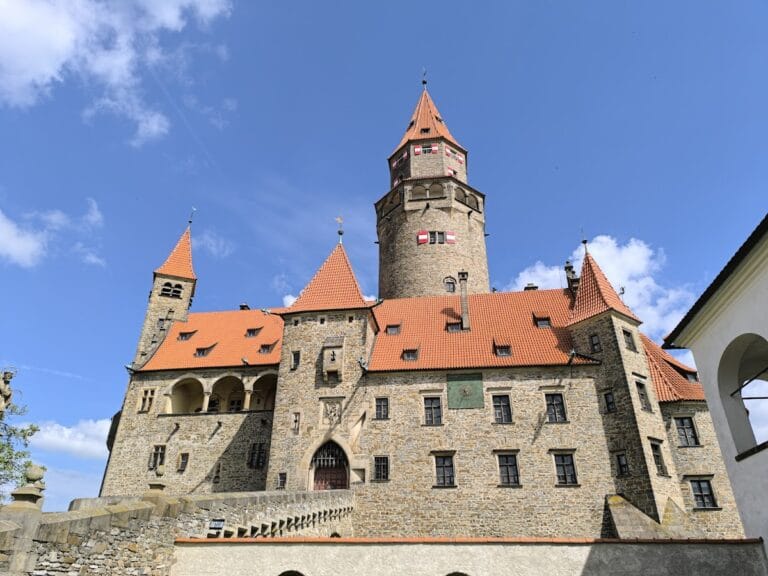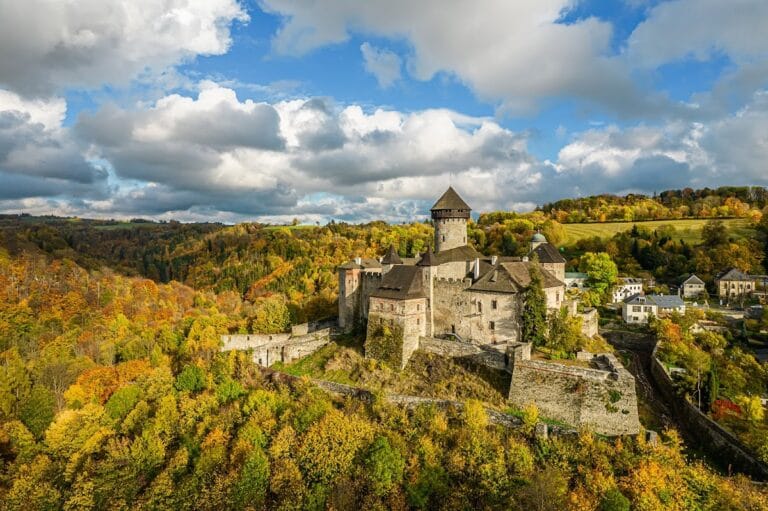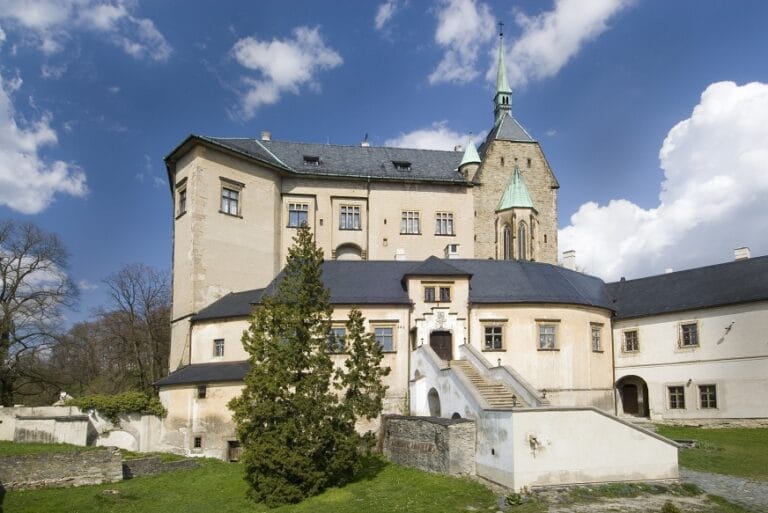Úsov Castle: A Historic Medieval Fortress in the Czech Republic
Visitor Information
Google Rating: 4.4
Popularity: Medium
Google Maps: View on Google Maps
Official Website: www.usov.cz
Country: Czechia
Civilization: Unclassified
Remains: Military
History
Úsov Castle, situated in the municipality of Úsov in the modern Czech Republic, was originally constructed by local medieval settlers during the 13th century. The earliest surviving record dates to 1260, when Idík I. of Švábenice, serving as burgrave of Olomouc, acquired the estate. He likely established the stone fortress amid dense forests by the Doubravka stream, positioned strategically along the route connecting Olomouc and Uničov.
From 1276 until 1408, Úsov Castle functioned as royal property, briefly entering the possession of the Šternberk family around the middle of the 14th century. During the late 1300s, it was under the administration of the sons of King John of Luxembourg—specifically Moravian margrave John Henry and margrave Jobst—who utilized the castle as a military stronghold amid various regional conflicts. This period emphasized the fortress’s strategic importance within Moravia.
In 1416, King Wenceslaus IV pledged the estate to Jan of Vlašim with the stipulation that the castle remain accessible to others, initiating roughly a century of Vlašim family rule. During their tenure, significant Gothic renovations transformed the castle, including the construction of the Vlašimka tower and substantial updates to the main palace and the Boskovic Palace. By 1457, these modifications had reshaped the fortress’s appearance and function.
Royal favor continued when, in 1513, the Boskovic family received the castle as a royal gift. They introduced Renaissance elements, such as extending the southern palace and adding a new gate equipped with a drawbridge. The older Vlašim palace was repurposed for service functions during this phase. The Boskovic lineage ended in 1597, after which the castle passed through marriage into the Liechtenstein family, who maintained ownership until the mid-20th century.
The Thirty Years’ War brought turmoil to Úsov Castle, notably in 1643 when Swedish forces set parts of it on fire. Following this damage, repairs restored its defenses and habitability. At the close of the 17th century, between 1692 and 1699, Prince Jan Adam Ondřej of Liechtenstein commissioned a Baroque reconstruction designed by the Italian architect Domenico Martinelli. This work included a three-story palace featuring a projecting central section, called a risalit, and added a distinctive baroque onion-shaped dome atop the main tower.
Throughout the 18th and 19th centuries, the castle served various functions. It was an administrative hub for the Liechtenstein estates and hosted a forestry school until 1867. Later, it became home to several educational institutions. In 1898, Jan II of Liechtenstein established a hunting and forestry museum within the castle, displaying artifacts amassed from his expeditions across Europe and Africa.
Following World War II, the castle and its collections were transferred to state ownership. Managed by regional museums, the site underwent closures for repairs in the 1980s and reopened in 1990. Since 1995, the property has belonged to the town of Úsov, while museum collections remain under the care of the Šumperk Museum.
Remains
Úsov Castle occupies a plateau promontory, its defensive design drawing from the French-style kastel model—a compact fortress emphasizing strong walls and integrated cylindrical towers. The castle is surrounded on three sides by a moat, with a high embankment protecting the northeast side. Archaeological studies have identified six round towers embedded within the curtain walls that encircle the castle, all crafted from stone and built during various construction phases that emphasize defensive functionality.
The primary entrance lies on the southwest side, approached by a stone bridge crossing the deep moat. Though originally this crossing may have been a drawbridge, it now exists as a permanent masonry structure leading visitors to a semicircular portal. This portal opens onto a vaulted passage with ribbed vaulting, which then grants access to an irregularly shaped courtyard, once the castle’s bustling central space.
Within the medieval enclosure stands the main palace, a three-story rectangular building serving as the core residence. Later Baroque construction filled the space between existing Gothic towers, enclosing the courtyard in a broad semicircular arrangement. The most prominent tower, known locally as “Hladomorna,” is cylindrical and topped by the Baroque onion dome with a lantern, housing a functioning clock mechanism installed during the late 17th-century renovations.
The castle’s outer defenses were strengthened over time with additional towers, and the battlements remain protected by shingle roofs. Modifications in the 18th century led to the removal of the original western fortifications, replaced by a new wall punctuated by small prism-shaped towers, reflecting evolving military architectural trends.
Several significant buildings stand around the courtyard. These include the Boskovic Palace and Vlašim Palace, both associated with previous noble owners, as well as a so-called Old School building and a detached carriage house. Inside, the spaces are relatively sparse but notable for extensive displays of antlers and horns lining walls and stairways, emphasizing the site’s long connection to hunting traditions.
Near the exhibition of African trophies lies the “black kitchen,” preserved with a 17th-century stove, wooden furnishings, and a collection of period kitchen tools that provide insight into the castle’s historic domestic life. The hunting and forestry museum housed within features over 4,000 natural history specimens. Among these are some 700 antlers and horns, mounted taxidermy animals representing both African and local fauna, a collection of hunting weapons, and forestry equipment. Of particular interest are the displays of poachers’ weapons and firearms crafted by Liechtenstein gunsmiths during the late 1700s and early 1800s.
Museum exhibitions occupy the first and second floors, with African animal trophies prominently displayed on the lower level while native bird, mammal, insect, and forestry-related collections fill the upper floor. A gallery space on the third floor showcases paintings by the artist Lubomír Bartoš, adding an artistic element to the historic setting.
The Renaissance segment of the castle currently houses a restaurant, and the surrounding grounds continue to serve as a venue for historical tournaments and events. Úsov Castle stands today as a protected cultural monument of the Czech Republic, formally registered under the number 1000144467.










